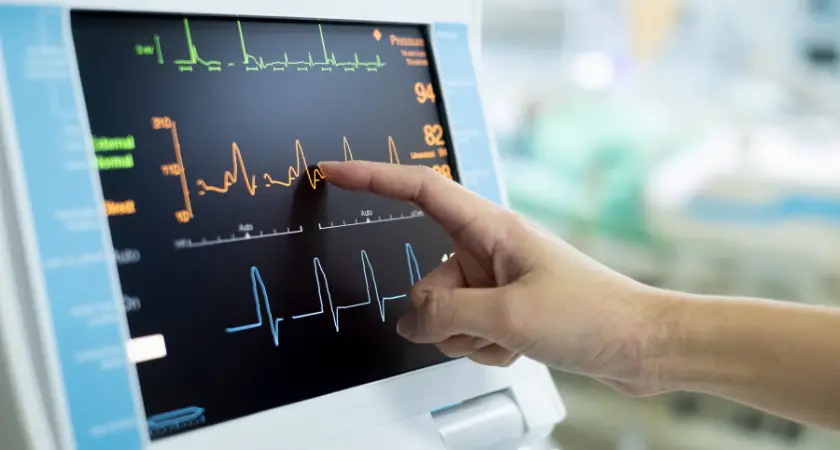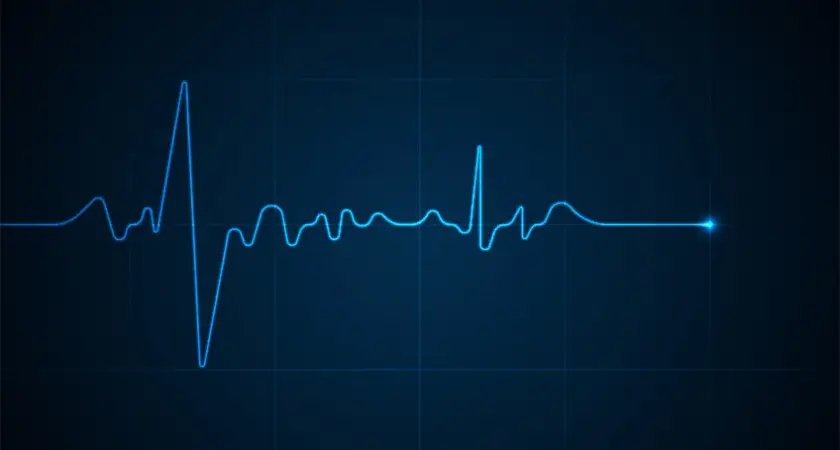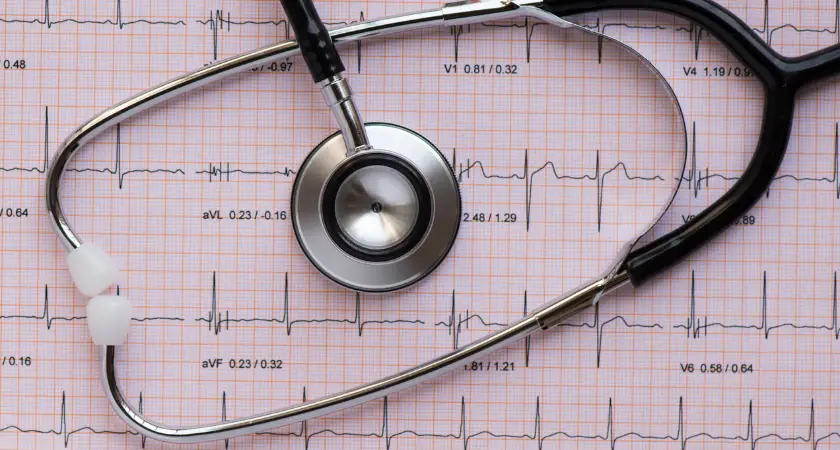EKG and Heart Attacks
What does an EKG look like in a heart attack? People frequently come into the emergency department complaining of chest pain.
Many of these people come into the emergency department after suffering for hours with “chest discomfort”. The first thing that the healthcare professionals will do is to put some oxygen on the patient and get an EKG. They will also do some labs.
The labs will consist of chemistry, blood count, urinalysis, and exercise. They will also do a troponin test. Troponin is a protein that the cardiac muscle releases when it is damaged.
What is a Heart Attack: What Does an EKG Look Like In a Heart Attack?
A heart attack occurs when one of the arteries in the heart is occluded or semi included so that the blood and oxygen cannot get to the muscle.
There are many reasons that a heart attack can happen. These EKG Calipers are used to measure exact measurements on an EKG. This book called The Rapid Interpretation of EKG’s, has illustrations on each page on how to interpret EKG’s.
The following are risks for heart attack :
- Coronary artery disease
- High blood pressure
- Elevated cholesterol /inflammation
- Obesity
- Smoking
- Diabetes
- Excessive alcohol
- Inactivity

According to the Centers for Disease Control, one million American have heart attacks each year. Around 250,000 of the people have previously had a heart attack. Almost 20% of people who have had a first heart attack will die.
What Does an EKG Look Like In a Heart Attack?
What is an EKG
The EKG machine is used to interpret the heart’s electrical activity. This electrical activity is captured by applying electrodes to the skin and making a recording. The EKG machine is a non-invasive procedure.
The EKG is used to detect the electrical differences that happen when the heart depolarizes after every heartbeat.
This book called EKG Interpretation is an excellent book on how to diagnose EKG arrhythmias. When you know how ECG works, you know how the most vital organ in our body works.
When something is wrong with the heart, you will be able to identify and possible get a diagnosis
When you mix that skill with some basic pharmacology – all of a sudden you have the knowledge to prevent specific heart conditions from happening!

Picture
Factors that cause disturbances in the heart’s electrical system
- Excessive alcohol
- Smoking
- Taking in stimulants like cocaine or caffeine
- Emotional stress
- Certain medications
- Thyroid problems
- Inflammatory diseases
- Birth defects
- Automatic nervous system dysfunction
An EKG is a powerful tool for diagnosing cardiac (heart) disorders. At an immediate glance, there are many disorders that be pre-diagnosed. These disorders include:
- Heart attack (myocardial infarction)
- Life-threatening arrhythmias
- Diagnose effects of an acute pulmonary embolism
- Enlarged heart (cardiomyopathy

Often times, a heart attack is precipitated by an arrhythmia. An arrhythmia is when the heart starts beating in an abnormal way. If you are susceptible to irregular heartbeat, you need the Alivecor® . The Alivecor®
is a wireless EKG monitor that will alert you if there is an irregular heartbeat. It is compatible with the Apple phone or Apple Watch. It can detect atrial fibrillation in seconds.
Conclusion
When a person is having chest pain, and 911 is called, the first thing the paramedics will most likely do is to do an EKG. When the patient arrives in the emergency department, the staff of the ER will also do an EKG. An abnormal EKG is not always definitive of a heart attack, but it gives the provider an idea of what is going on.
My name is Phyllis Robinson MSN, RN. I have been a Registered Nurse for 27 years in the Cardiac Intensive Care Unit. I am passionate about cardiac care and heart disease. I also want this blog to be an educational tool that people can refer to for traditional and alternative treatment. I will blog on heart disorders such as high blood pressure, congestive heart failure, cardiomyopathy, and high cholesterol.
I received my Nursing degree from Baltimore Community College.
I went on to receive my Masters in Nursing from Walden University
I have worked for almost 30 years in Critical Care with a focus on heart health. I am an advocate of preventive healthcare.

